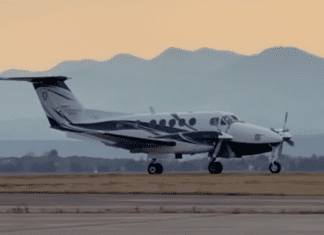
This post is also available in:
 עברית (Hebrew)
עברית (Hebrew)
Refueling aircraft during a mission in order to extend their range has always been a challenge. A new unmanned carrier-based tanker aircraft will help extend the range of the US Navy’s future carrier air wings and keep carriers themselves out of range of coastal defenses. For that purpose, the US Navy has recently awarded Boeing an $805 million contract to construct four prototypes of its design for the MQ-25 Stingray.
The move is expected to bring about a dramatic shift in the integration of unmanned and manned aircraft, and an improvement of the lethality of the air wing.
The prototype contract is the first step toward delivering “initial operating capability,” a first production run of the drones, by 2024, according to arstechnica.com.
Boeing beat out Lockheed Martin and General Atomics for the contract. Northrop Grumman — which built the Navy’s first carrier-based drone prototype, the X-47B Unmanned Combat Air System-Demonstration (UCAS-D), dropped out of the competition last year.
The MQ-25’s design requirements called for an aircraft capable of launching from a carrier deck and delivering 14,000 pounds (6,300kg) of fuel to aircraft 500 nautical miles (926km) away.
That capacity and range, along with the low-observable shape of the drone, could essentially double the range of F/A-18 Super Hornet and F-35C Joint Strike Fighter attack missions.
Eventually, Boeing could deliver up to 72 Stingrays at a cost of $13 billion.
The refueling mission of the MQ-25 is a significant course correction from the original goal of the Navy’s Unmanned Carrier Launched Airborne Surveillance and Strike (UCLASS) system, an autonomous strike aircraft capable of flying deep into hostile airspace on its own to crewed Navy F-35Cs. The Navy eventually re-focused carrier drone efforts on filling a role that no fighter pilot fights for: the flying gas station.
The refueling mission is critical to the future of the Navy, particular in its deterrence role in the Western Pacific. Chinese anti-ship ballistic missiles and other defenses placed on man-made islands in the South China Sea could put carriers at risk if their aircraft can’t operate at greater ranges. But there have been hints that future modifications to robotic tanker designs could allow them to carry weapons, too, as the technology required for them to take on that role matures.

























